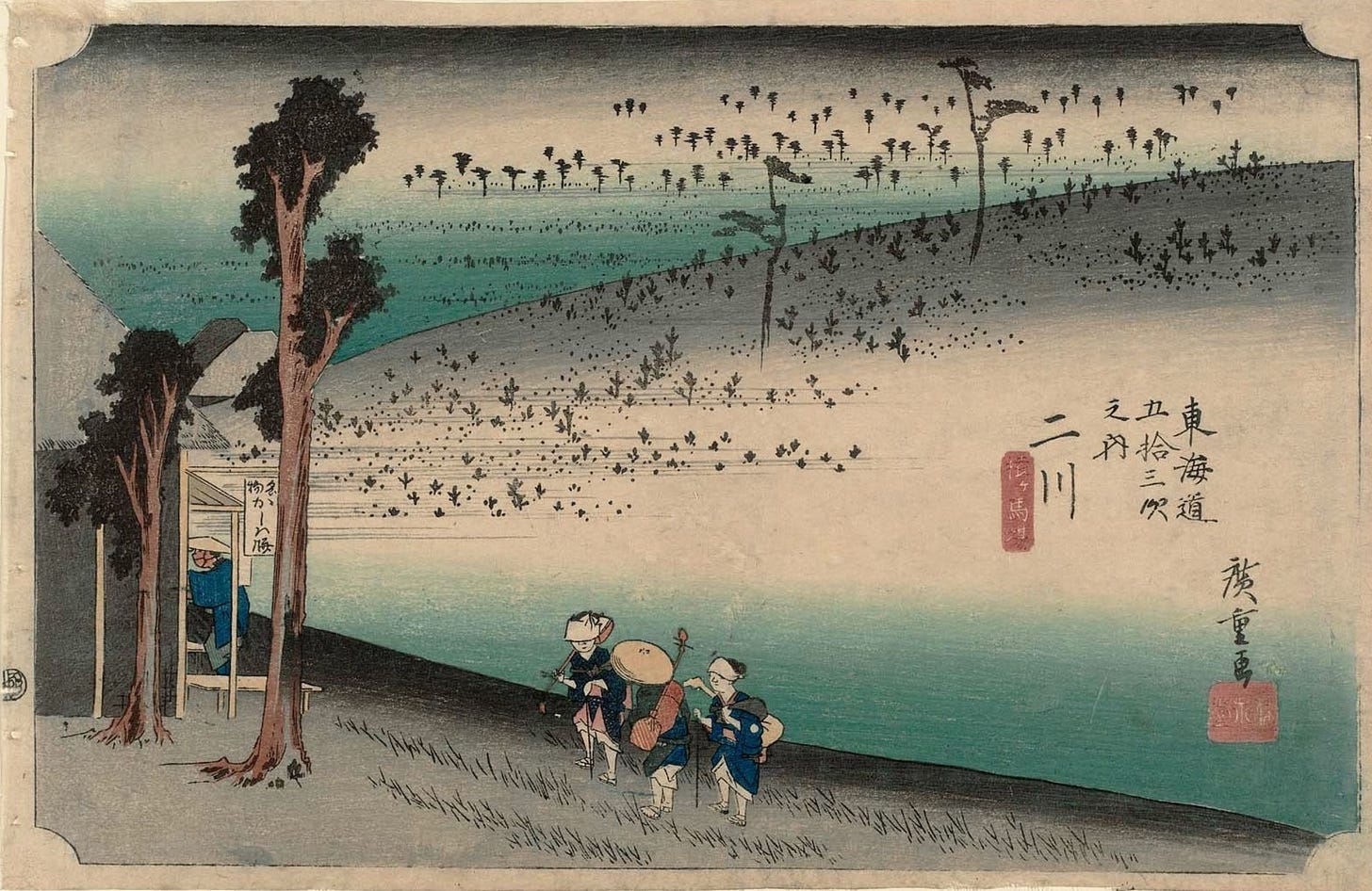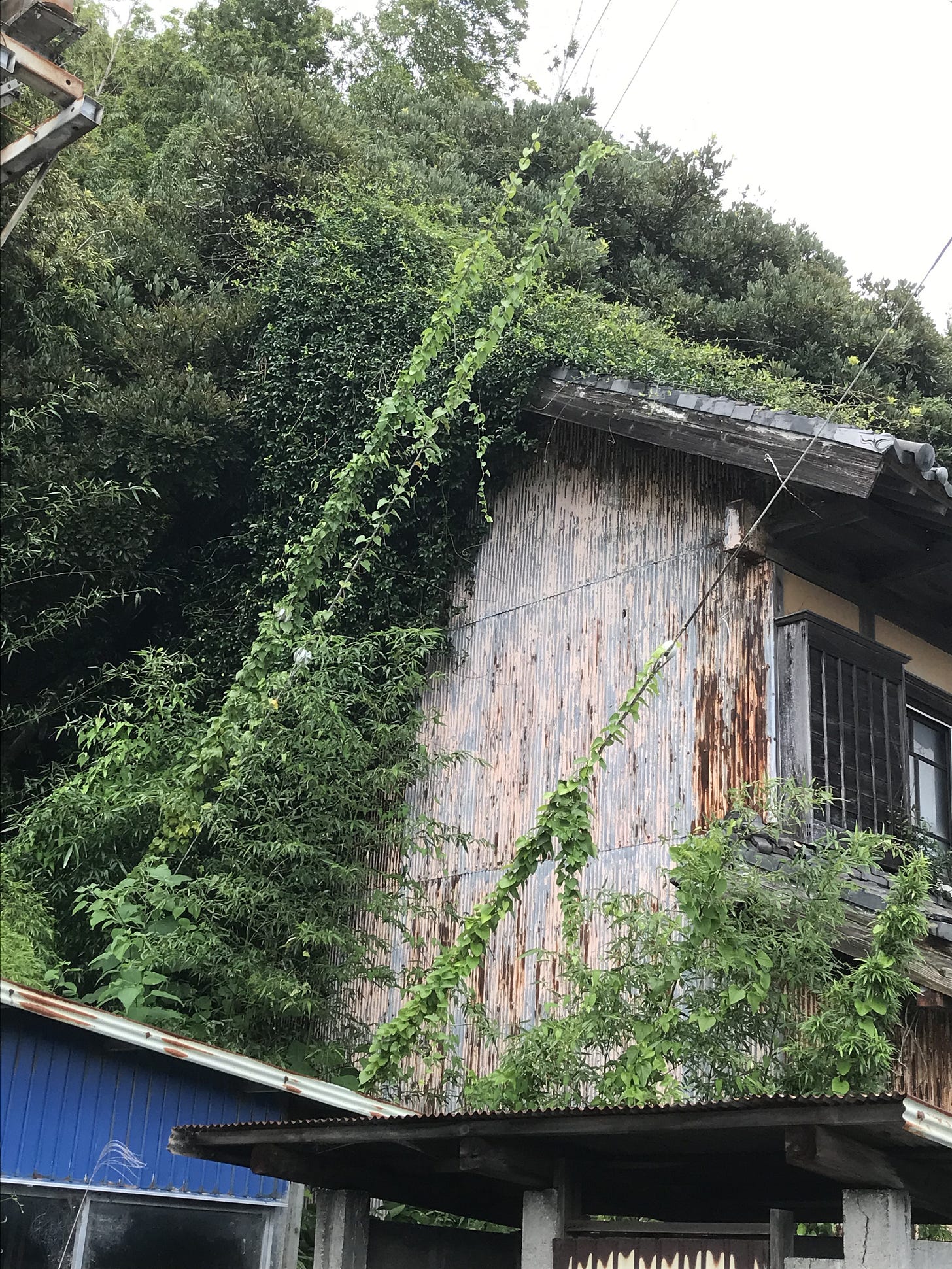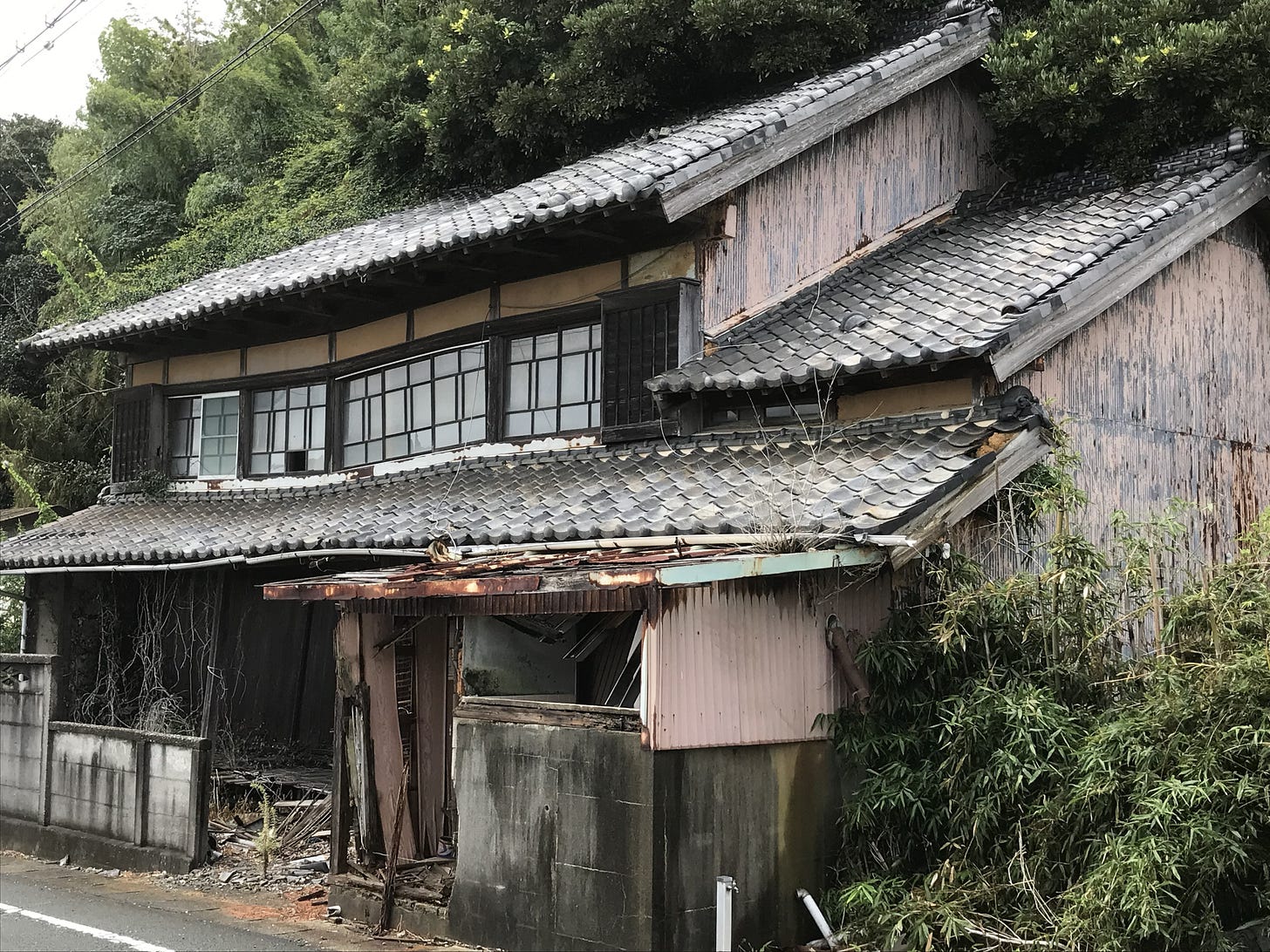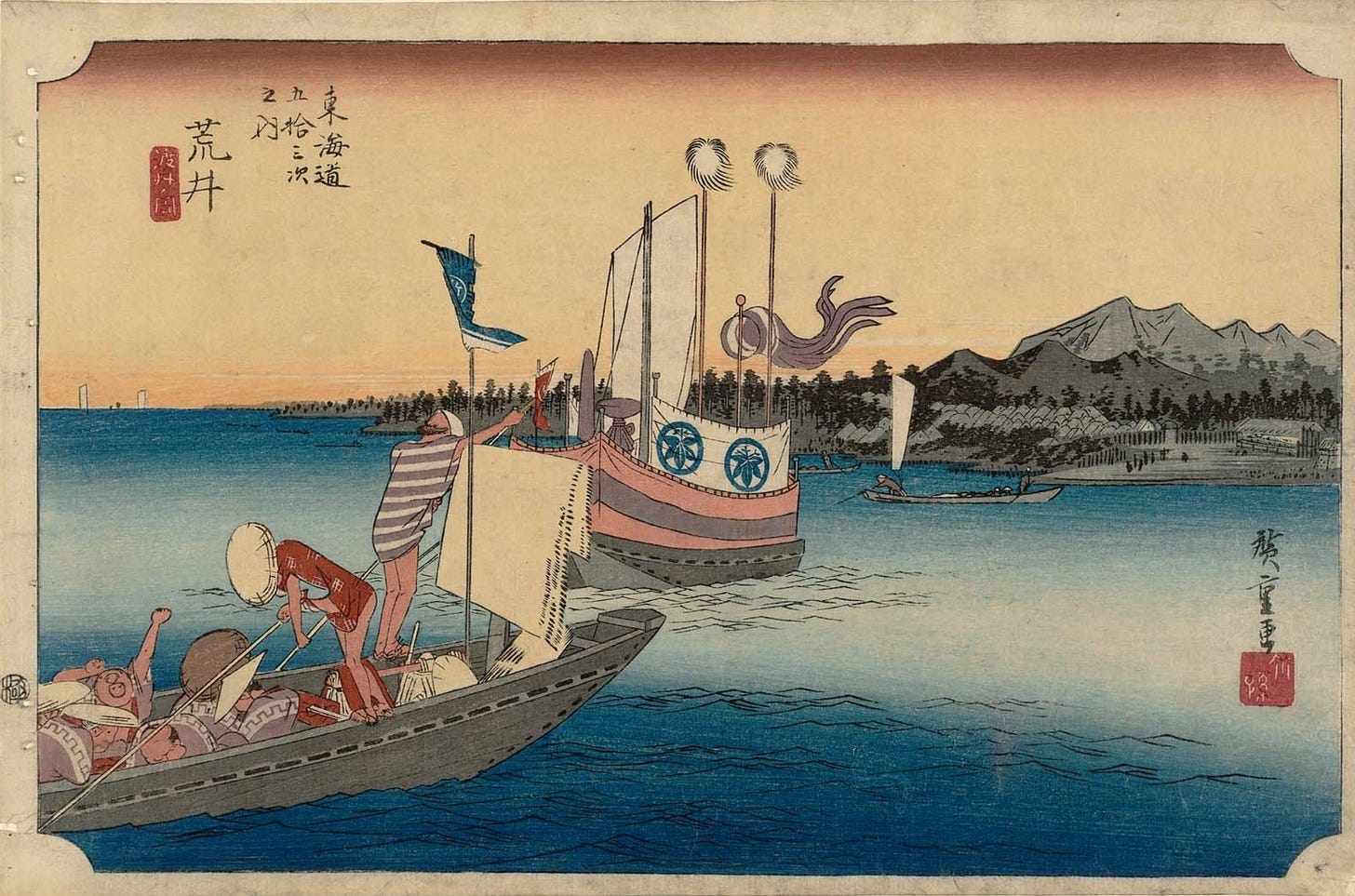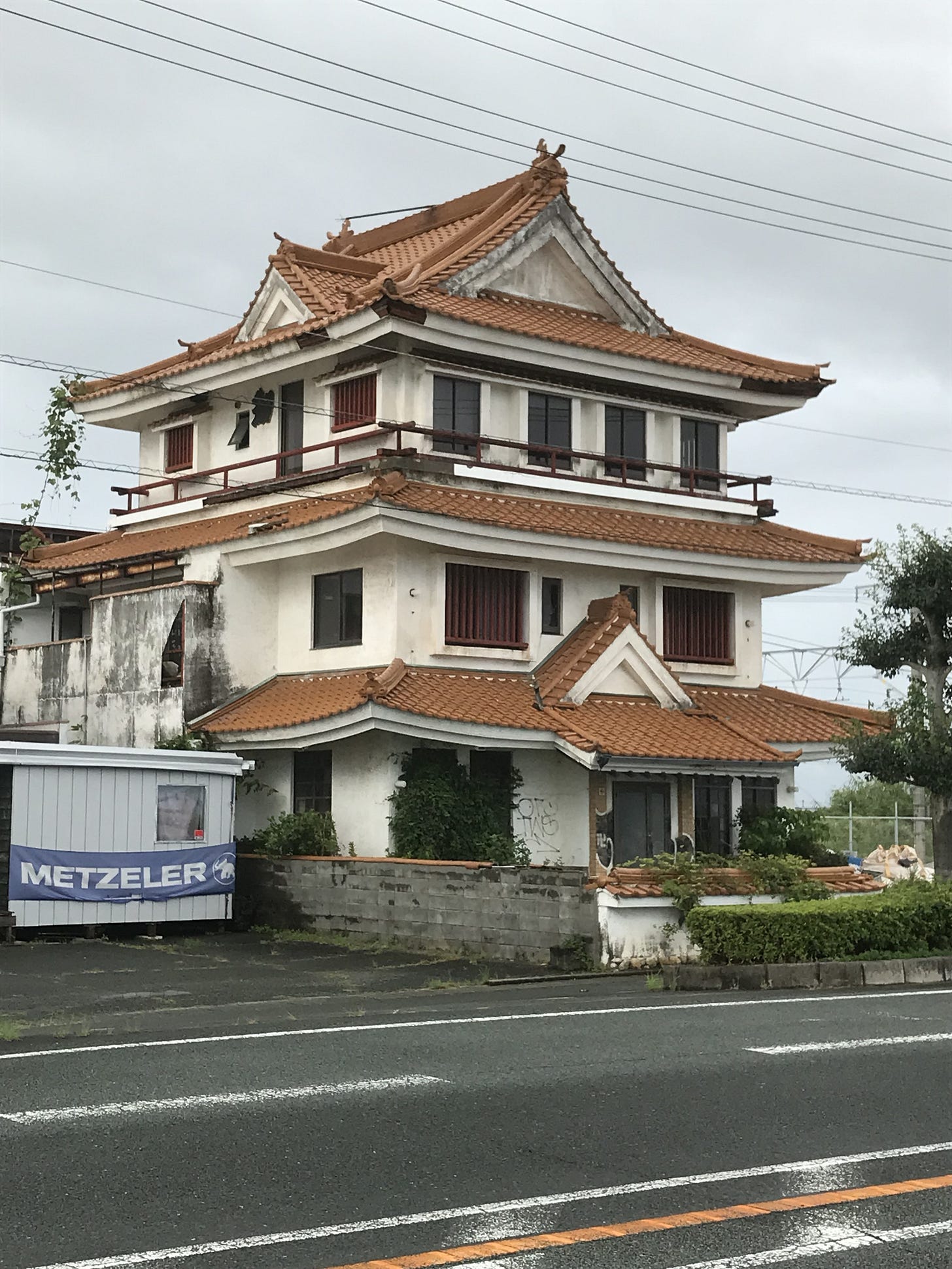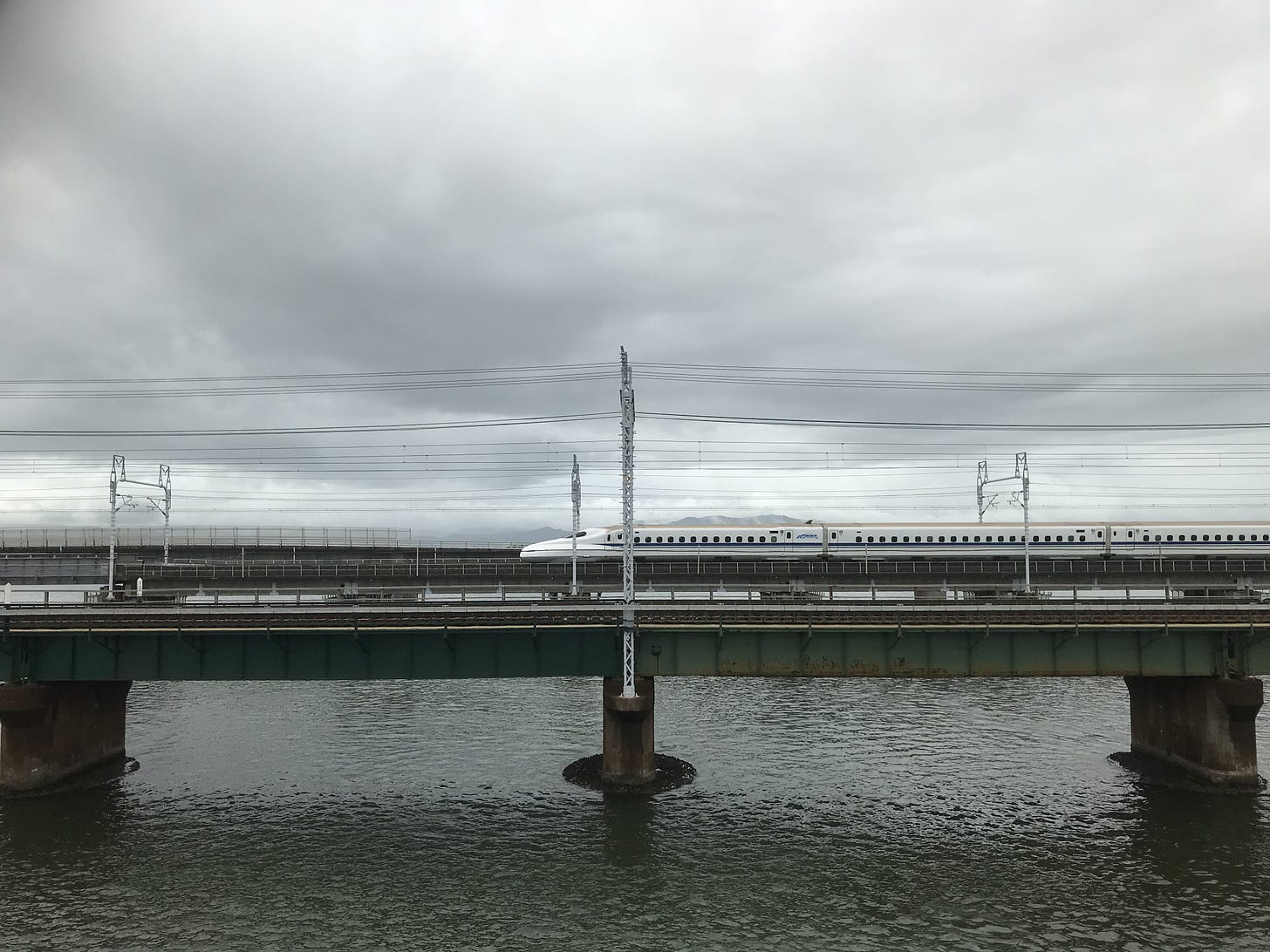After my night with the river crabs, I had limped into Toyohashi and taken the shinkansen back home. Now, I was back on the Tokaido, for one day only, fully equipped for blisters this time. Feet must be kept dry at all costs - I had baby powder, gauze, absorbent pads, large plasters - everything I needed. But the sandals were well broken in by now and I never needed any of it.
I leave Toyohashi via Route One, miles of suburban housing and the kind of stores that are conveniently located next to main roads out of towns - fast food restaurants, second-hand book and game stores, car rental shops and new car showrooms. Eventually the Tokaido breaks away from all this as it hits low hills on the outskirts of Toyohashi. A faded pink love hotel “Hotel Passage”, where I’m sure many a passage has been explored, marks the boundary between town and countryside.
On entering the post town of Futagawa, I go past the first of what seems to be a chain of Philippine pubs - “Crazy Cats”, and a whole shop dedicated to baseball paraphernalia. What is a Philippine pub and what makes it different from your average Japanese pub? A Philippine pub is essentially just a typical Japanese “snack” type pub, but with Filipinas doing the serving rather than Japanese hostesses. There is possibly a heavier focus on karaoke than a standard Japanese “snack” bar. After the bursting of the bubble economy and falling incomes during the nineties, it became harder for Japanese men to travel to the Philippines and experience the nightlife there. Instead, Philippine women came to Japan on entertainer visas and began working in, and setting up their own Philippine pubs. This all peaked in 2004, when complaints about human trafficking led to a sharp fall in the number of entertainer visas issued. Since then, the number of Philippine pubs has fallen pretty rapidly to about a tenth of the peak. (Hirozo Nakajima, The Sociology of Philippine Pub Ladies 2017 Shincho Sensho) In some areas, the police cracked down harder on pubs that were connected to illegal marriage scams or had yakuza links. Osaka, for example, doesn’t have many Philippine pubs for this reason.
Futagawa has a brand new train station, but there are still a few old buildings lining the main street. A light drizzle turns to heavy rain, and I take cover in a thoughtfully provided shelter in a tiny park on one corner of a crossroads. There’s a museum in Futagawa, but as I peer in through the front entrance, I realise it’s very similar to the museum I went to in Akasaka, an example of a typical Tokaido post town inn. I don’t need to see another one, and I don’t want to stop unless I really need to.
Hiroshige’s print of Futagawa shows a grassland speckled with small pine trees. On the far left, a single bushi is buying something from a teahouse selling the local speciality mochi rice cakes. In the foreground, three goze - blind wandering female entertainers - are making their way towards the same teahouse.
At Futagawa’s eastern edge is a large factory. Sinfonia Technology makes a variety of parts and systems for aircraft, cars, semiconductor factory clean rooms and even rockets. It’s another one of these companies that seems to have remained at the forefront of the technology wave, incrementally improving their products and investing in new technologies. As a result, they remain steadily and reasonably profitable.
I’m back on Route One again, and the soil has changed colour to a pinkish-brown, deeply furrowed and planted with neat rows of cabbages. Across the fields lie the factory and showroom of “Black Thunder”. There are actually few true chocolate bars in Japan in the style of Cadbury’s or Mars. Black Thunder is one of the few that come close, and it really is delicious, like Coco Pops coated in chocolate. Sales built up without expensive advertising campaigns because of a carefully targeted marketing strategy. First, the Yuraku Confectionery Company that makes Black Thunder, targeted university students in the Kanto region around Tokyo during the mid to late nineties. By 2008, Black Thunder sales had grown enough that they were able to sponsor the men's gymnastic team during the summer Olympic Games of that year. In 2017 Black Thunder McFlurries were an item on the McDonald’s menu for a limited time. The result of this clever marketing is a reasonable net profit margin of 4.5 percent, much better than the anaemic margins of the Pasco bakery I passed on the last part of the walk.
The Tokaido leaves Route One, winding its way up into the hills as I approach the Pacific coast. This is supposed to be one of the highlights of the Tokaido - a stunning view to the rolling breakers of the Pacific, virtually unchanged since Hiroshige’s print. Indeed, the woodland and visible hillsides do look exactly like Hiroshige’s print, but another sudden downpour obscures the view. I can’t see the Pacific at all through the veil of falling rain. I squelch down the hillside to the narrow coastal strip between forest-covered hills and pounding surf.
The Tokaido runs right up against the hillsides. I pass an abandoned house, with a slumping second floor, that is being consumed by the vegetation-covered slope. Concrete pillars stand ready for a bridge that will carry a new road from the hills to Route One by the coast. Behind the hills is a large Suzuki factory, and beyond that, is the Sakichi Toyoda Memorial Museum, the founder of the Toyota motor company’s old house.
Finally, I reach Lake Hamana. On the shinkansen journey from Osaka to Tokyo, this is one of the more memorable points. On one side, the lake meets the sea with a torii-gate on an island, on the other is a boat racing park. The crossing at Lake Hamana is now a smooth journey across a wide pedestrian bridge, with reclaimed land islands breaking the over-water sections into a series of short hops. But back in the Edo period, this was still a tough crossing. So much so that an alternative route around Lake Hamana existed, known as the Princess Route. It was not just the potential toughness of the water crossing itself that was problematic, but also the rigorousness of the barrier inspection post at Arai made the inland route more comfortable for high-class women.
The Lake Hamana crossing - the boat with the curtain surrounding it in the middle contains the high-ranking members of a daimyo procession, and the boat to the left in the foreground contains the middle-ranking members.
I really want to carry on to finish today’s journey on the far side of the crossing in Maisaka, but frequent stops for rain showers mean it’s getting late. So, I break the journey midway across at Bentenjima, an island of resort hotels that were probably hugely popular in the bubble era and early nineties, but I’m not sure if they still are.







